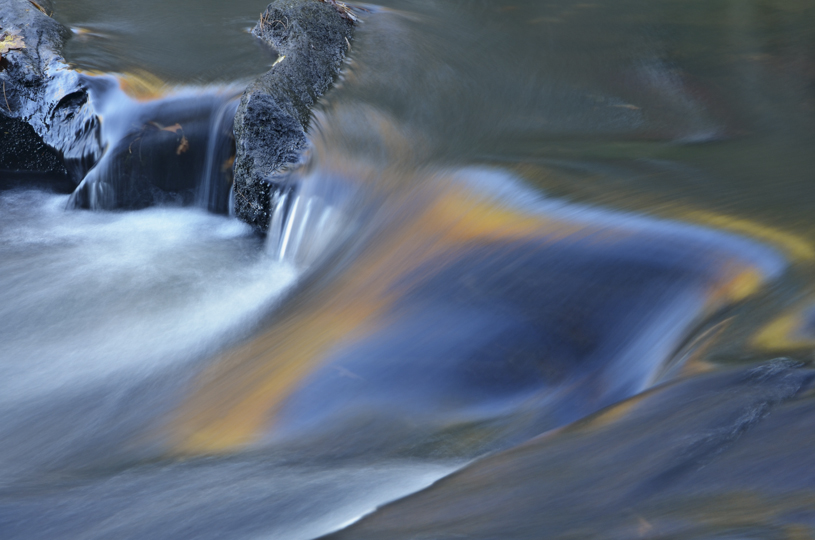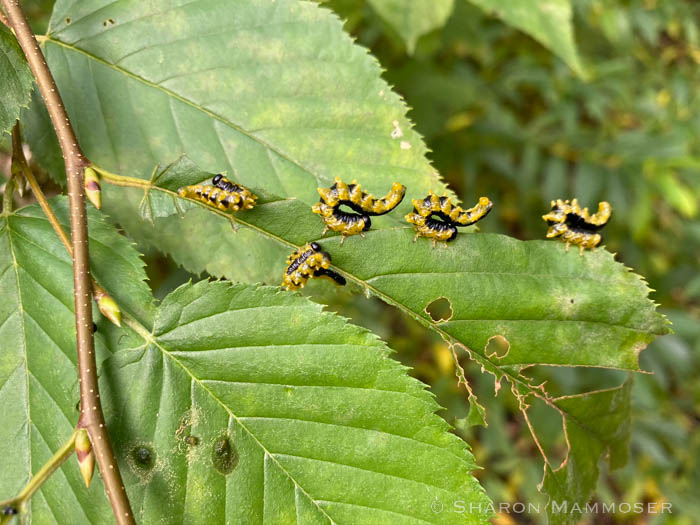The critters on the edge of the leaf in last week’s puzzler resemble caterpillars. Most who see them think they are some kind of caterpillar, perhaps that of a moth. But the insects at the edge of the leaf are sawfly larvae. Never heard of a sawfly? You’re not alone. With over 950,000 species of insects in the world, and for all of us non-entomologists, it’s hard to keep them all straight! Most of us are happy to just be able to identify it as an insect!
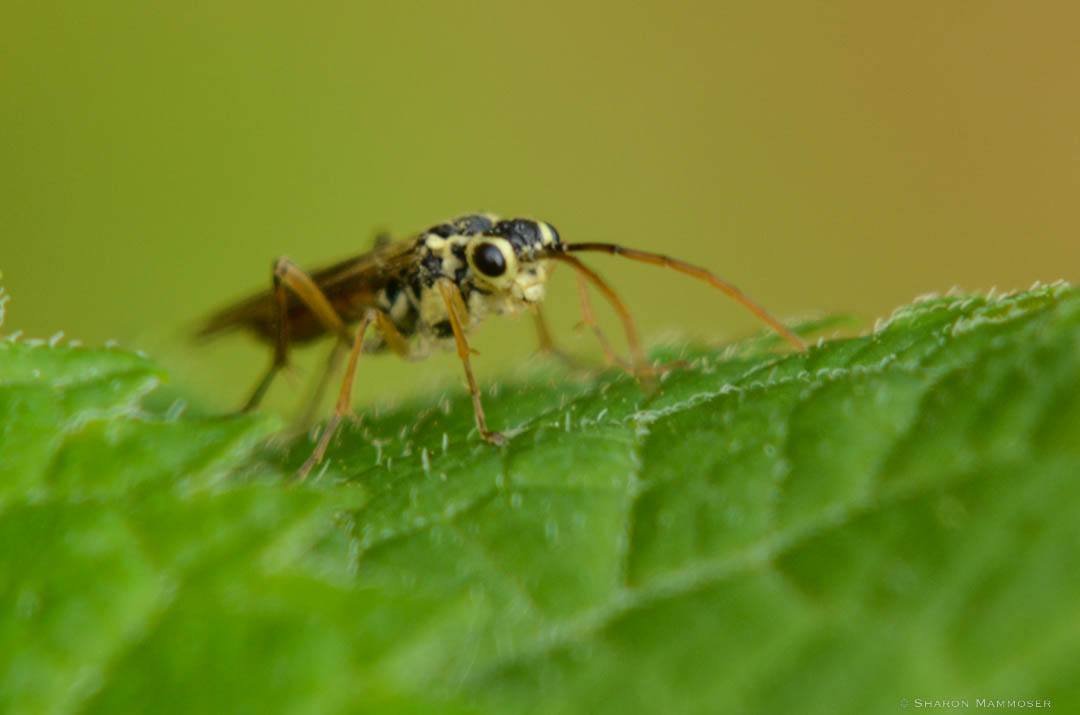
Sawflies are in the same order as bees, wasps and ants. There are over 7000 sawfly species, many of which specialize on a particular tree such as elm, willow or beech. Sawfly adults differ from bees and wasps in that they do not have the distinctive wasp waist. Sawfly adults feed on many things including sap, nectar, pollen and other insects. Most sawfly adults are small– less than an inch long, though the largest one is 2 1/4 inches long.
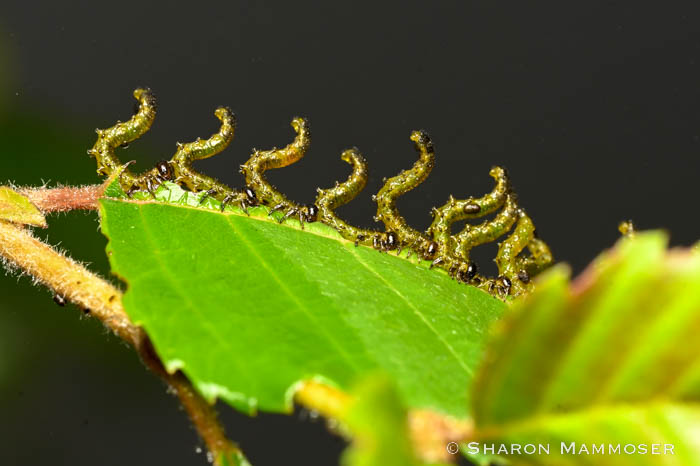
Sawfly larvae on the other hand, feed on leaves. Many are gregarious, and have the anti-predator adaptation of gathering at the edge of leaves they are feeding on, curling their bodies in a way that mimics the edge of the leaf. Some will even thrash around in sync when disturbed. Sawfly larvae are different than caterpillars in that they have many more legs (more than 6 pairs) and an absence of something called crochets, which are circles of gripping hooks–like velcro– that caterpillars have to grab onto leaves. Sawfly larvae are never more than an inch long and are usually smooth, and lacking hair on their bodies.
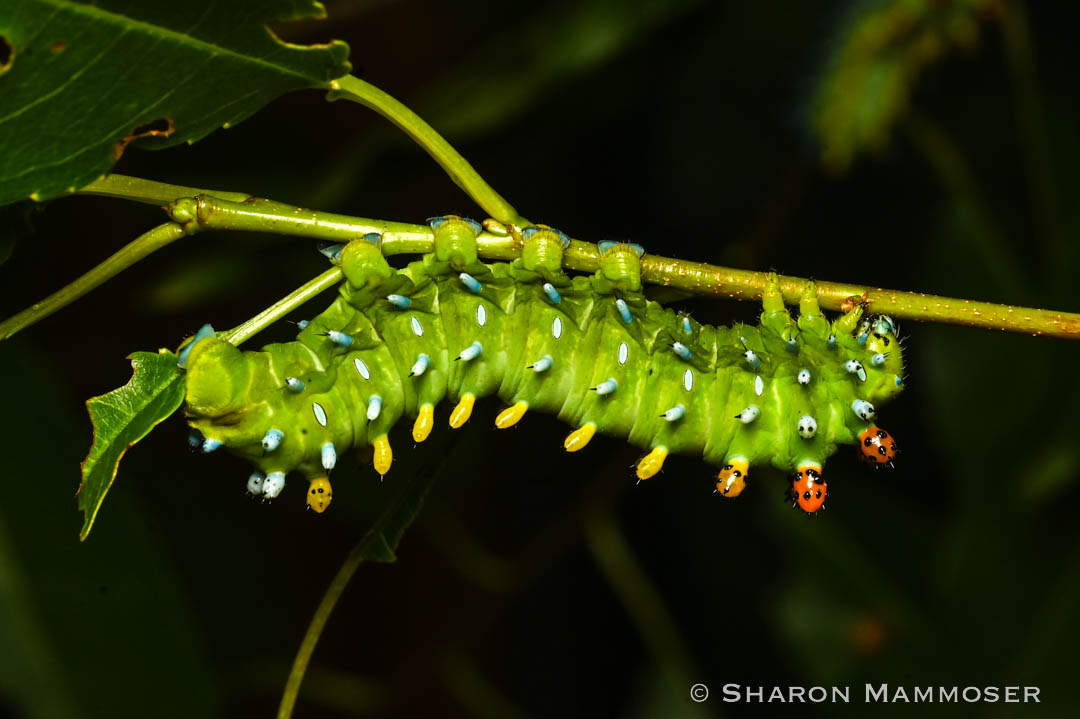
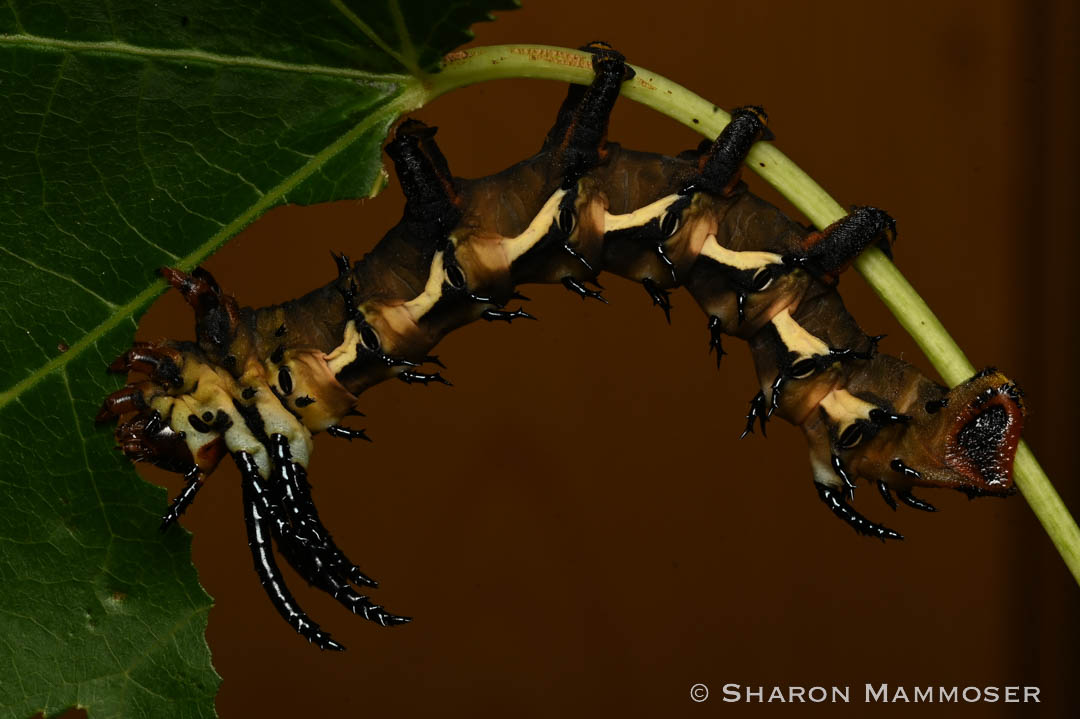
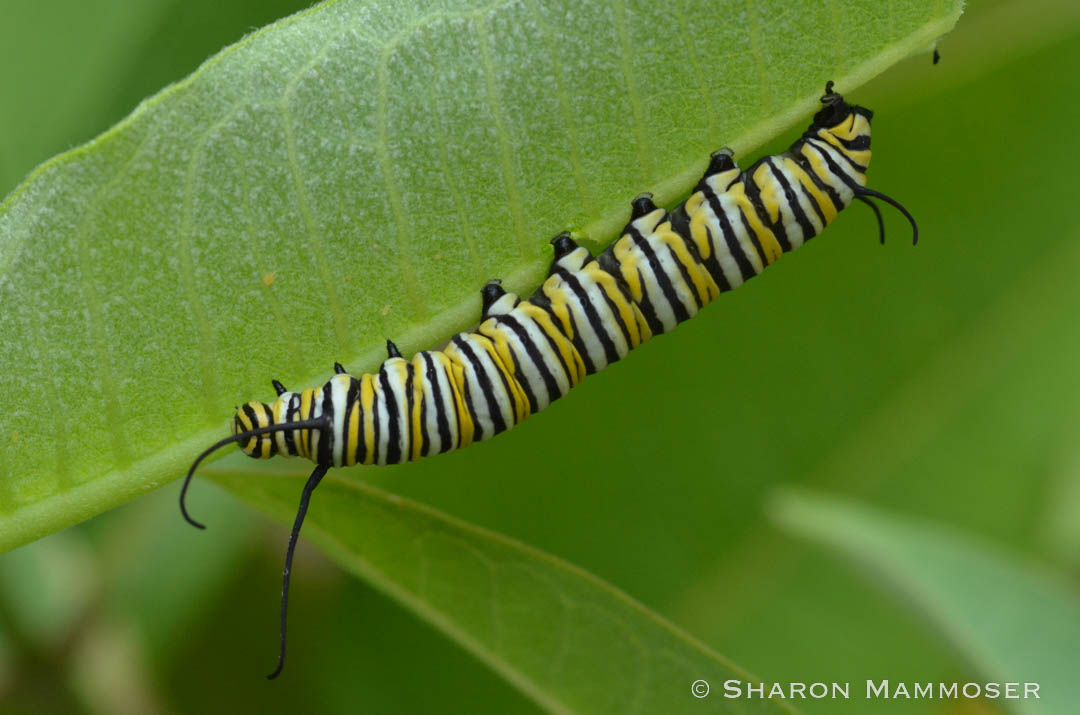
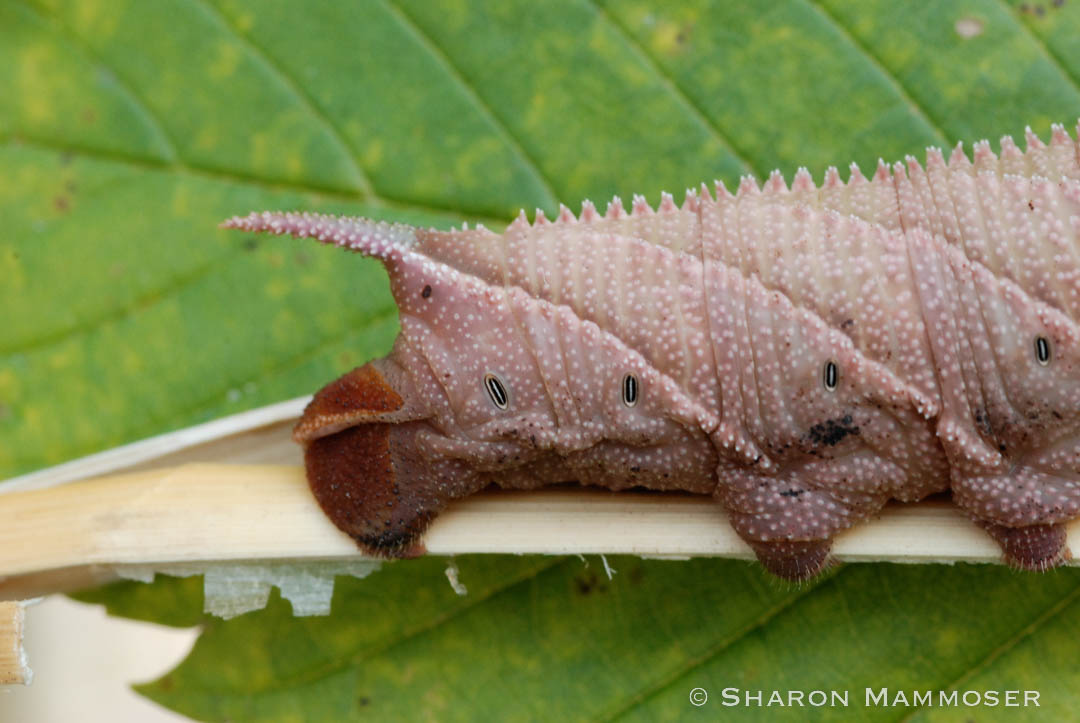
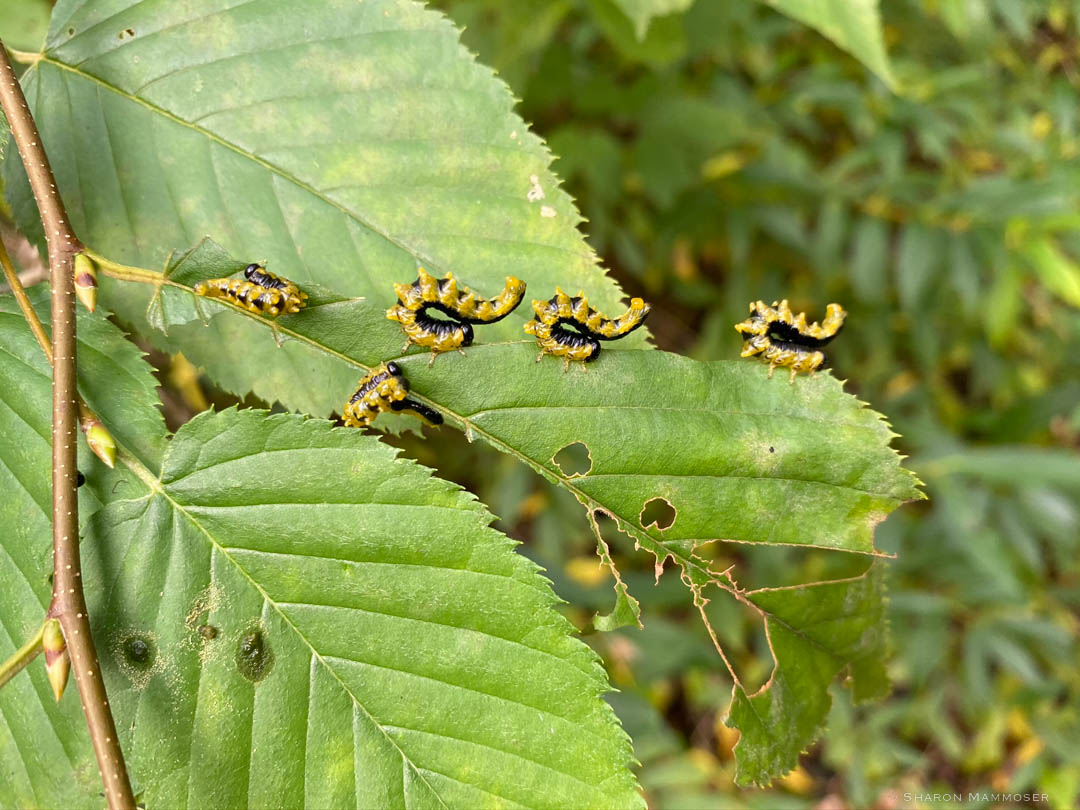
Sawfly larvae can damage trees and plants and are considered agricultural pests. Most healthy, mature plants will tolerate their damage, but saplings or newly transplanted plants are in jeopardy from an infection of sawfly larvae.
Ready for another puzzler? This one features white fuzz on a tree trunk. See if you recognize it.

